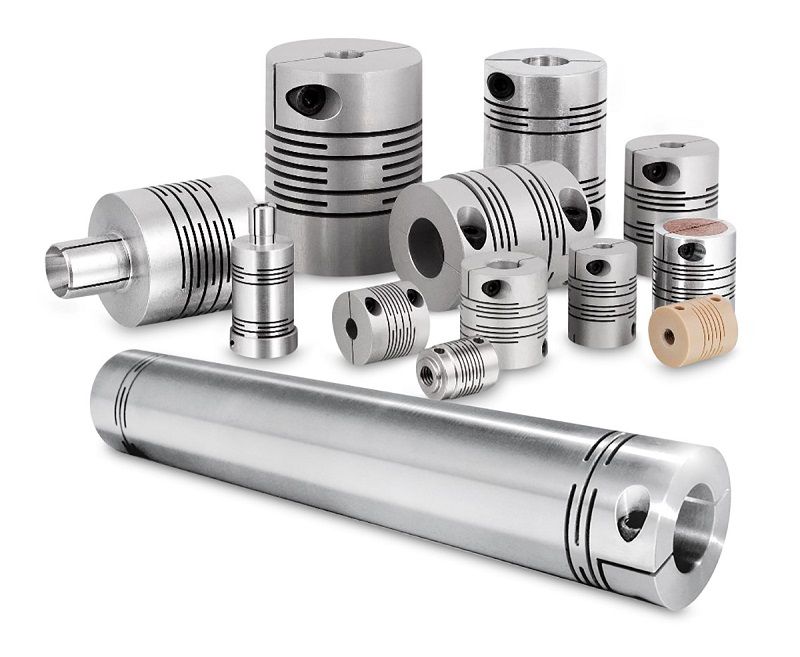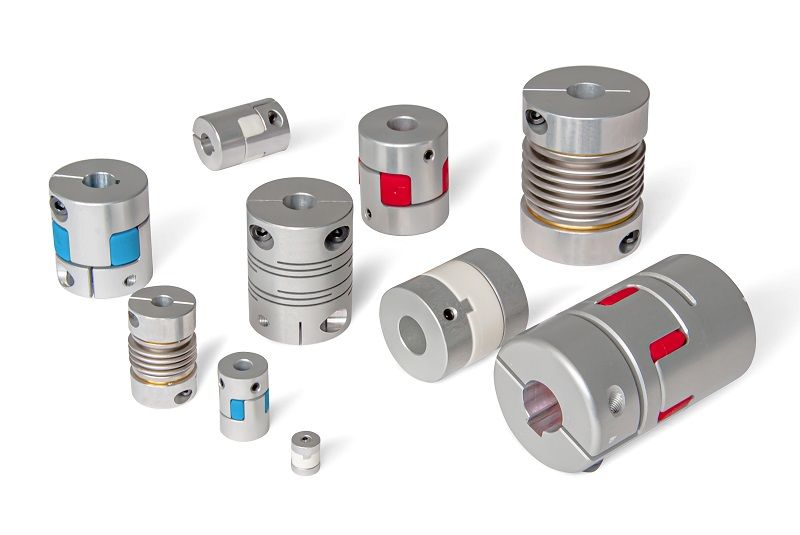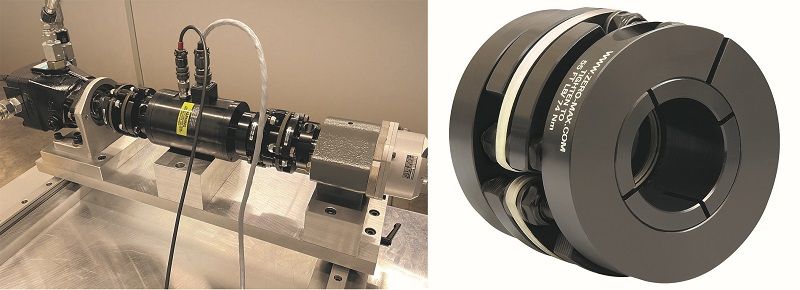Miki Pulley Sliced ASK Couplings Compensate for Misalignment
Stainless steel ASK Couplings from Miki Pulley feature a unique “sliced” body structure making them an effective low-cost corrosion resistant solution that can accommodate many types of misalignments. The stainless-steel design makes them ideal for use in food and chemical applications.
One piece ASK Coupling design is the ideal method for compensating all types of system misalignment in a shaft-to-shaft connection. The sliced design handles high rotation speeds in high temperature ranges experienced in food and chemical systems.

The ASK Coupling offers exceptional torsional stiffness and strength. This proven Miki Pulley coupling design assures accurate shaft rotation with precise control. The coupling is available in different materials that dampen conductive heat transfer from motor to output shaft. Also important, the coupling provides limited shaft misalignment to alleviate premature system bearing wear.
The coupling’s aerodynamic profile decreases noise while optimizing performance at high speeds. Simple yet reliable, ASK couplings are easily configurable to accommodate a wide range of DBSE (distance between shaft ends). Bores can be arranged with clamp, taper-lock or keyed styles for specific application requirements. Also important, ASK Couplings are a cost-effective choice for food and chemical applications and are particularly well suited for chemical chlorine applications and small conveying systems used in the food service industry.
mikipulley-us.com
JW Winco Expands Coupling Portfolio
Couplings from JW Winco transmit rotary motions and torques from shaft to shaft. They also even out tolerances and mechanical deflection that would otherwise result in damage to drive or measurement configurations.

JW Winco recently added couplings of aluminum and stainless steel that include designs for positive and non-positive connections. Multiple bore diameters, various, stiffness and hardness levels of the coupling body as well as an optional keyway allow very specific customization to the given use case. In general, all couplings compensate for offsets and misalignments, accommodate runout error and axial motion, and dampen vibrations and impacts to varying degrees.
At the application level, there is a choice between position and motion control or torque and power transmission.
For position and motion control, the rotary motion must be transmitted with very high precision and accuracy. This requires a coupling type that functions with zero backlash in the direction of rotation and has high torsional stiffness. Typical applications include servo and stepper motors for linear axes, industrial robots and test benches.
For torque and power transmission, on the other hand, the focus is on pure force transmission. This calls for couplings that can withstand high torques and heavy loads while functioning reliably in harsh conditions. Typical applications include conveyor systems, pumps and agitators, packaging machines.
jwwinco.com









